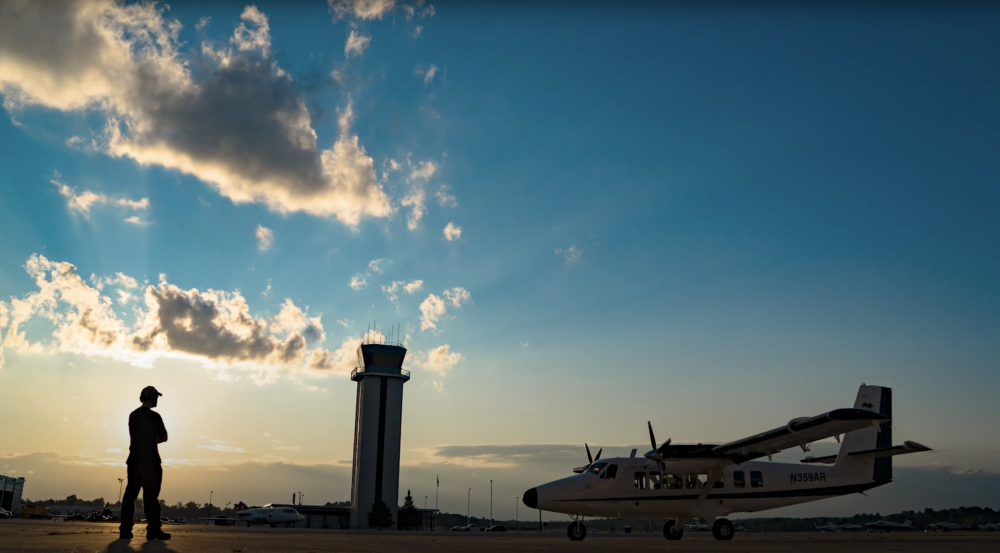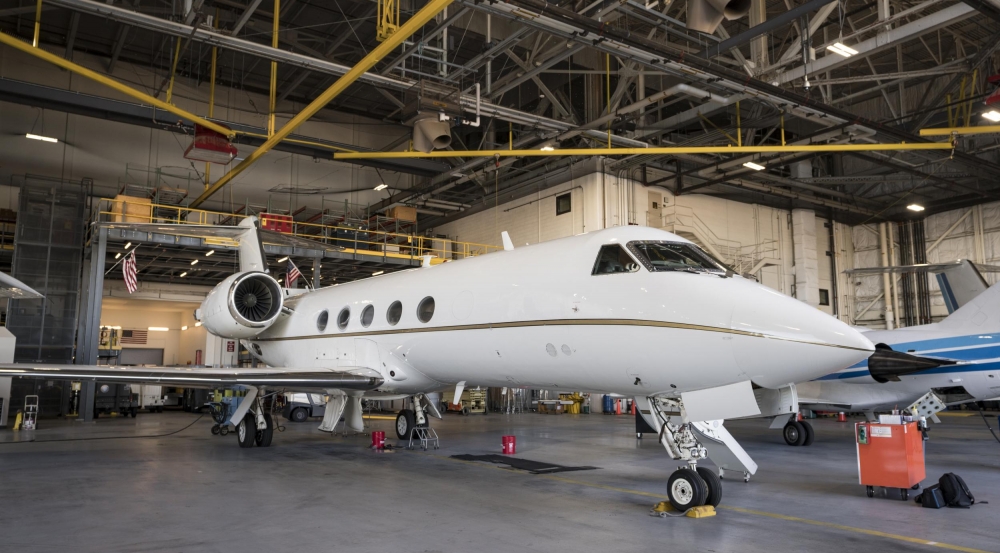Flight Test Facility

Lincoln Laboratory's Flight Test Facility operates several aircraft that are used to flight-test prototype systems for diverse airborne applications. Researchers from across the Laboratory routinely schedule flight time to evaluate new antennas, imagers for air surveillance, aircraft collision-avoidance tools, and long-range RF and laser communication systems. To obtain real-world measurements for the continued development of the antennas and systems, Laboratory researchers also commission these aircraft for data collection sorties.
Our multipurpose fleet of aircraft is housed in Hangar 1715 on Hanscom Air Force Base, just over a mile from the main Lincoln Laboratory complex. A Cessna 206 single-engine aircraft is used for testing small systems and for acting as a "cooperative target" vehicle. The Twin Otter, an unpressurized twin-engine turboprop with short runway requirements for takeoffs and landings, can be flown at small, local airfields. A Falcon 20 business jet can carry systems mounted in pods beneath the fuselage or wings. Our three high-speed, long-range Gulfstream jets can accommodate up to seven pods and a nose-cone-mounted sensor.

The aircraft are flown, maintained, and managed by licensed pilots, certified maintenance technicians, and administrative personnel whose first priority is flight safety. All flight procedures and equipment meet or exceed Federal Aviation Administration (FAA) requirements.
In addition, the facility has indoor space for demonstrating the capabilities of unmanned aerial vehicles (UAVs), and its staff collaborate with research teams to arrange FAA-compliant offsite UAV testing.
Flight Test Facility personnel work with Laboratory researchers to make any needed modifications to the test aircraft and handle the integration of the prototype systems onto the aircraft. They also facilitate the researchers' tests by coordinating airspace, FAA certifications, and safety checks for the flight.